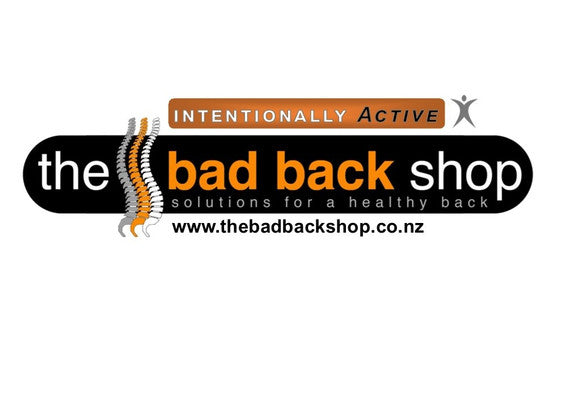Too much time on your rear end? ‘Active sitting’ can make a difference.
Posted by Phillip Haussmann on
Too much time on your rear end? ‘Active sitting’ can make a difference.
Adapted from an article By Karen Campbell GLOBE CORRESPONDENT JULY 01, 2017
How much time are we parked on our backside? We sit for hours at work in front of computers, desks, come home and sit for a meal then plonk down into our soft lounger.
Karen Campbell GLOBE CORRESPONDENT says that, "research suggests all the hours we spend exercising at the gym don’t counteract sitting passively in a chair for hours at a time — which can lead to a wide range of health risks, from joint problems and metabolic issues to shortened life spans.
“We have to get past the notion that it’s OK to just collapse in your chair,” says Cathryn Jakobson Ramin, author of “Crooked: Outwitting the Back Pain Industry and Getting on the Road to Recovery.”
However, the in vogue option of standing all day at an adjustable desk is not the answer either, that will have long term postural problems just like sitting.
Sitting smarter is a better solution, when we do need to spend time in a chair. That’s the concept of active sitting. A variety of portable products — like the TOGU Dynair Wedge Ball Cushion, the BetterBack lumbar support, Sitactive Pro-D Cushions and teven something simple like the sloped coccyx cushion — head you in the right direction by tilting the pelvis forward to help align the spine into a healthier, more natural posture.
But a burgeoning array of backless chairs and stools for home and office takes active sitting to the next level. Designed with flexible features to encourage movement while you sit, they engage the core muscles and allow a more open angle between torso and legs.
The 90-degree angle once recommended between legs and torso is being revised to a more open angle of about 135 degrees, encouraging a slight forward tilt of the pelvis to align the spine. This takes some of the weight off your tailbone and puts it into your legs, reducing strain on discs and ligaments and preventing the spine from settling into an unhealthy slump, unlike most conventional office chairs.
“The best sitting arrangement is where you have active legs,” says Jakobson Ramin. “Essentially a perching one where you make a tripod is best for [overall] health.”
These active sitting chairs encourage near constant micro-movement, which is key — studies show that we tend to be more alert and focused when we’re moving, with blood and oxygen circulating more freely. Fidgeting and wiggling are good for you.
“Our bodies are not designed for sitting, and using an active chair as much as you can is a great idea, even for older people,” says physiatrist Dr. Carol Hartigan, medical director of the Spine Center and the Spine Rehabilitation Program at New England Baptist Hospital.
Most of the options for active seating fall into one of two basic types — balls, and stools.
Karen suggests "The simplest, least expensive option is the fitness ball chair, a balance ball in a stable circular frame. You’ve seen them. When you sit on it, the ball’s natural give and slight bounce encourage micro-movements for balance." However The Bad Back Shop says, because of its instability, no easy adjustable size options and the awkward size we do not recommend these as a chair proper. Use them for exercise but not as a chair.
The less safer option are seats that create movement, stools which encourage "twisting, rocking, leaning, and spinning", usually via fixed seats atop rounded or articulated bases. They’re especially popular in school settings as outlets for fidgety kids. But for adults, a particularly innovative variant of the wobble stool is the German-made Swopper. Its spring system allows the cushioned seat to move not only side to side and forward and back, but up and down. It’s a blast to use. There is also the Sit/stand stools like the Muvman and Dyna Stool. One of the best new options from Norway is the HAG Capisco, it has the advantageous of a saddle chair but an innovative back rest.
Other options are the Saddle chairs; Salli and Bambach.
Karen also mentions the new Tic Toc, "Similarly, the brand new Tic Toc, designed by Fully (formerly Ergo Depot) founder David Kahl, has a beautifully elegant wood seat, but it may be hard and slippery for some. However, its curved slope allows the legs to open and angle down from the hips, like the old kneeling chairs, and the h-base has runners like a rocking chair, enabling a subtle, very natural rocking and twisting."
"Even some hard-core active seating enthusiasts recommend starting slowly and swapping out chairs periodically for supportive seating that allows the spine to rest. The good part about all these dynamic chairs is that they’re not so comfortable you’ll be prone to settle in and work nonstop for hours. You’ll need frequent breaks to stand and stretch — and that’s the whole idea anyway, right?".
